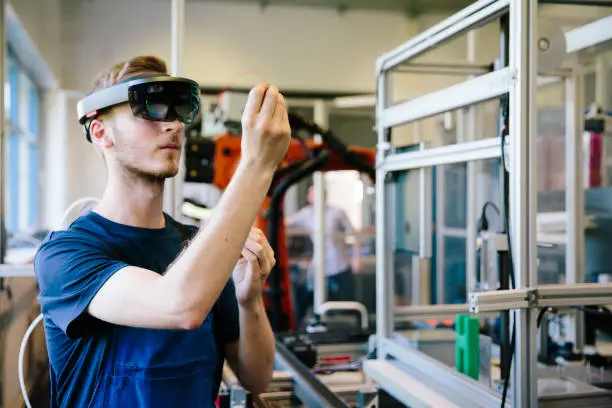In the ever-evolving landscape of technological innovation, wearable technology stands out as a symbol of progress and convenience. From smartwatches that monitor our health to augmented reality glasses that redefine how we interact with the world, wearables have permeated various aspects of our daily lives, promising to revolutionize the way we live, work, and communicate. In this blog, we embark on a journey to explore the fascinating realm of wearable technology, unravelling its impact, potential, and challenges in shaping the future.
The Evolution of Wearable Technology
Wearable technology traces its roots back to the early 20th century with inventions like the wristwatch. However, it wasn’t until recent decades that advancements in miniaturization, sensor technology, and connectivity paved the way for truly groundbreaking wearables. Introducing devices like the Fitbit or ARGO by Digilens, which revolutionized fitness tracking, marked a turning point, igniting widespread interest in wearables among consumers.
Key Innovations and Applications
- Health and Fitness Monitoring: Wearables have emerged as indispensable tools for health and fitness enthusiasts. Devices like the Apple Watch and Fitbit track vital signs, monitor physical activity, and even detect irregularities in heart rhythms, empowering users to take control of their well-being.
- Smart Clothing: The integration of technology into clothing is reshaping the fashion industry. From biometric shirts that measure heart rate to smart fabrics capable of regulating temperature, wearable textiles are redefining comfort and functionality.
- Augmented Reality (AR) and Virtual Reality (VR): AR and VR wearables like Google Glass and Realwear Navigator 520 offer immersive experiences that transcend traditional boundaries. From gaming and entertainment to education and training, these devices unlock new realms of possibility, blurring the lines between the physical and digital worlds.
- Assistive Devices: Wearable technology holds immense potential in assisting individuals with disabilities. Innovations such as exoskeletons and smart prosthetics empower users to overcome physical limitations, enhancing mobility and independence.
The Impact on Industries and Society
The proliferation of wearable technology extends beyond individual users, impacting industries and society at large in profound ways:
- Healthcare: Wearables facilitate remote patient monitoring, enabling healthcare providers to deliver personalized care while reducing hospital admissions. They also hold promise in early disease detection and prevention, revolutionizing healthcare delivery models.
- Fitness and Wellness: The rise of wearables has sparked a cultural shift towards proactive health management. By promoting physical activity and healthy lifestyle choices, these devices contribute to reducing healthcare costs and improving overall well-being.
- Workplace Productivity: In the corporate world, wearables enhance productivity and safety. Smart glasses equipped with augmented reality overlays provide workers with real-time information and instructions, streamlining complex tasks and minimizing errors. A great example is Moziware CIMO in different industries.
- Privacy and Ethical Considerations: The widespread adoption of wearables raises important concerns regarding data privacy and security. As these devices collect vast amounts of sensitive information, safeguarding user data and ensuring ethical use are paramount.
Overcoming Challenges and Shaping the Future
Despite its immense potential, wearable technology faces several challenges on its path to widespread adoption and acceptance:
- Battery Life and Reliability: Many wearables struggle with limited battery life and reliability issues, hindering user experience and usability.
- Interoperability and Standardization: The lack of interoperability and standardization among different wearable platforms poses challenges for seamless integration and data exchange.
- User Acceptance and Design: Design plays a crucial role in the adoption of wearables. Devices must be intuitive, comfortable, and aesthetically pleasing to appeal to a broad audience.
- Regulatory Compliance: The regulatory landscape surrounding wearable technology is complex and continuously evolving. Compliance with data protection regulations and safety standards is essential to ensure consumer trust and confidence.
Conclusion: Embracing a Wearable Future
As we stand on the cusp of a wearable revolution, the possibilities are limitless. From enhancing healthcare outcomes to redefining how we interact with the world, wearable technology holds the key to a future shaped by innovation and connectivity. However, realizing this vision requires collaboration among industry stakeholders, policymakers, and consumers to address challenges and unlock the full potential of wearables.
In embracing wearable technology, we embark on a journey towards a more connected, informed, and empowered society. With each technological breakthrough, we inch closer to a future where the boundaries between man and machine blur, and the promise of a more integrated, personalized human experience becomes a reality. Let us embrace this future with optimism, curiosity, and a steadfast commitment to harnessing the power of technology for the betterment of humanity.







